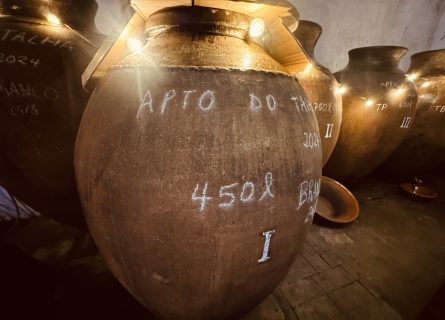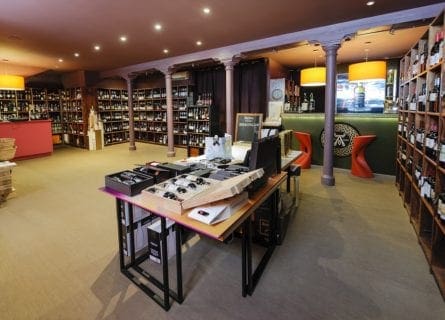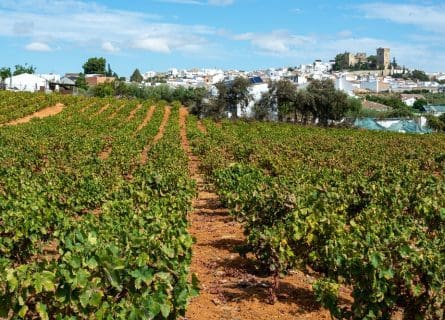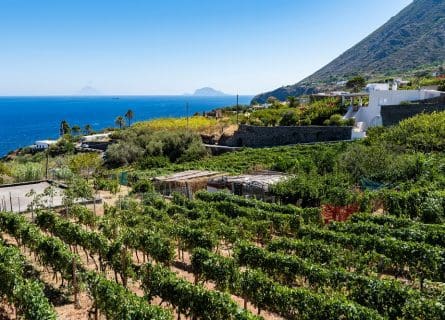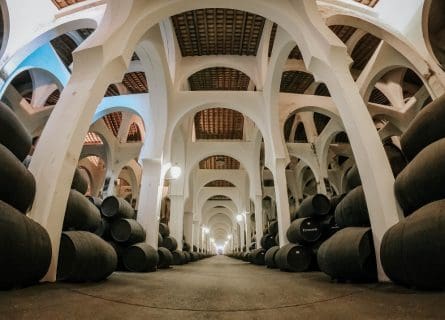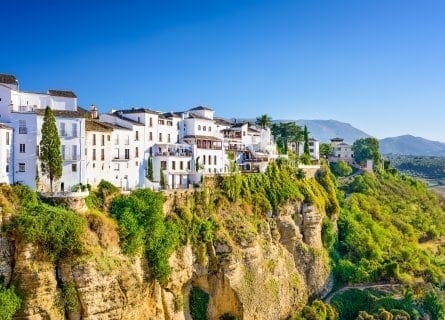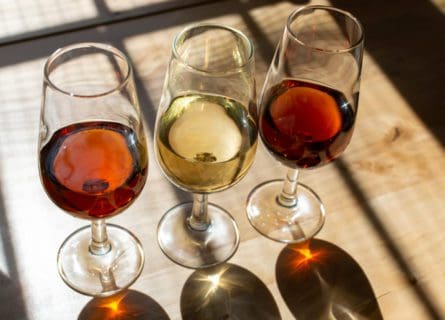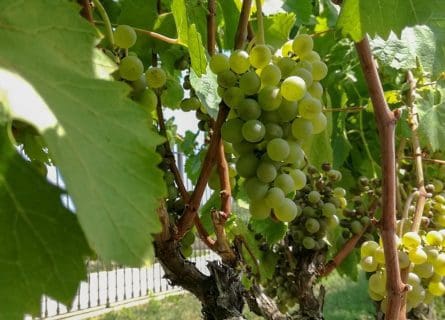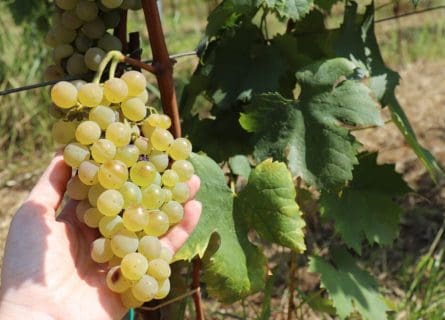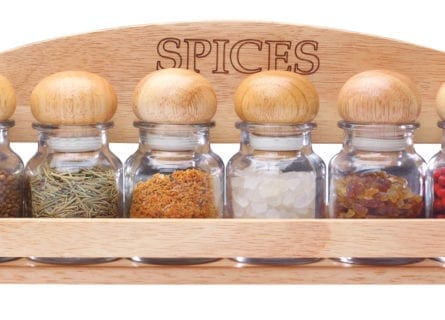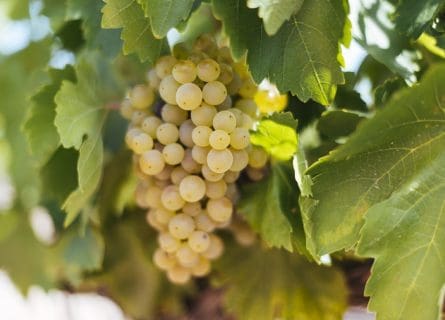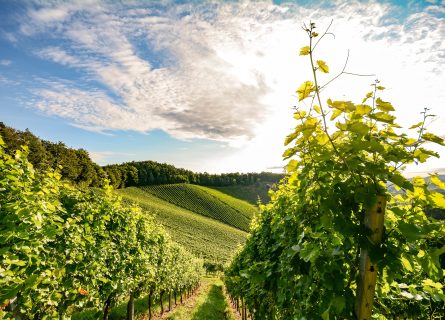Canary Islands Wine Regions Guide
Unearth the Volcanic Elegance: Canary Islands' Wines - Where Nature and Terroir Embrace in Perfect Harmony!
EXPLORE ALL OUR GUIDES: SPANISH WINE REGIONS
Last updated: December 9, 2023
Introduction
The Canary Islands, once the source of Spain’s most famous (and now passé ) sweet wines, are back in business. Winegrowers may mourn the loss of interest in these exquisite dessert wines, but they’re committed to the cause of reinvention. Thus, perfumed, tangy whites and elegant reds (based on pre-phylloxera vines) represent the modern face of Canary Island wine. They have joined the international game with zest and are now on the radar of key influencers and buyers. The overarching DO Islas Canarias can be used in Gran Canaria, La Palma, El Hierro, Lanzarote, and La Gomera. But, for real excitement, seek out the individual appellations in this eclectic collection of viticultural treasures.
History
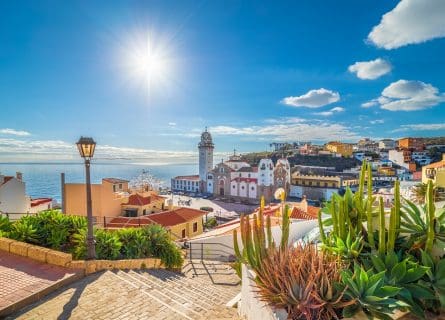
The ethereal volcanic Canary Islands off the coast of Morocco have a long and unique history of growing vines. For centuries, a heavy, sweet, alcoholic wine from Malvasia was produced in the Canary Islands, using the Malmsey grape variety also found in Madeira. The seven islands were formed over 14 million years ago when volcanoes first erupted in the Atlantic Ocean. Historians believe that in the first millennium B.C., a race called the Gaunches settled on the islands; genetic analysis undertaken in the 21st century suggests that the Gaunches were close relatives of the North African Berber tribes. They lived in blissful isolation for centuries until the European conquistadors subjugated the archipelago in the 15th century; they were first discovered by a Genoese sailor called Lancelotto Malocello in 1312.
Yet the conquest of the Canary Islands took almost a century to complete. In 1402, a French explorer named Jean de Béthencourt joined forces with a crusader Gadife de la Salle, to land a force of men on the smaller islands of Lanzarote and Fuerteventura. They were acting for the Spanish King Henry III of Castile, who had funded this expedition hoping to find riches in the unexplored territories of the Atlantic. Their soldiers quickly overcame resistance from the Gaunches, planting the Spanish flag on both islands that same year. However, the remaining five islands would prove far more challenging to control. After fierce fighting in the mid-1400s, Spanish conquistadors took La Gomera, Granaria, and La Palma. But, the largest island of Tenerife did not become a Spanish province until 1496, following the bloody battles of Aguere and Acentejo. Sadly, very little remains of the Gaunche culture today.
By the 1600s, the Spanish overlords had planted vines on many of the islands, particularly Tenerife and Lanzarote. At the height of their fame, these unctuous sweet wines were the darling of the European aristocracy and the wealthy. Sadly, in the 18th century, demand plummeted as connoisseurs found a new love in the wines of France and Portugal. As a result, the entire wine-producing industry declined in a few decades, and most of the vineyards were pulled up as demand dried up. Ironically, the phylloxera louse that destroyed so much of Europe’s vines in the late 1800s was not a real issue, as it could not survive on the sandy terrain. Nevertheless, as consumers became increasingly indifferent to these wines, the industry dangled over a precipice in the Canaries.
However, pockets of production did survive on the islands of Tenerife, Lanzarote, and La Palma. A few bodegas (wineries) continued to make classic Malmsey wines traditionally, distinguished by their powerful floral, lychee, and apricot aromas. Yet far more have embraced modernity, producing a range of dry white styles that use indigenous varieties to their fullest extent. Indeed, some of the most exciting wines emanating from the Islands today are the zesty, citrus-infused whites from the Gual and Marmajuelo varieties, capturing the attention of wine lovers who seek a point of difference – sommeliers are also greatly excited by these wines. There are also promising developments in red wine production, helping to raise awareness of the growing Canary Islands wine industry and firmly put these wines on the international map. The global spotlight of fame has started to shine brightly on these volcanic remnants.
Geography and terroir
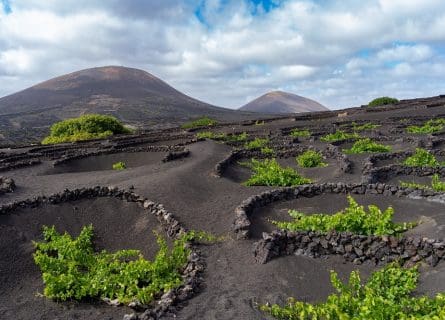
Poised on the edge of the tropics west of Morocco, the Canaries represent paradise on earth. Vines bask in a generous supply of sunshine tempered by Atlantic winds. The scenery is among the most varied in the world: lava deserts, tropical forests, dunes, and volcanic peaks can all be found here. Today the islands are divided into two provinces. The four western isles, making up the province of Santa Cruz de Tenerife, are very mountainous; Tenerife’s dormant volcano, Mount Teide, is responsible for the unique mineral-rich terroir that resisted phylloxera in the 19th century.
Meanwhile, the eastern Islands – Gran Canaria, Lanzarote, and Fuerteventura – belong to the province of Las Palmas. Vines are planted on six islands – only Fuerteventura has been left out of the viticultural picture altogether.
The most important D.O. in Tenerife is Tacoronte-Acentejo, which has over 1,700 hectares under vine. Located in the Anaga Peninsula on the northeastern coast of Tenerife, the ungrafted vineyards benefit from the cooling Atlantic mists, and those planted on high-altitude sites can yield impressive results in the hands of a talented winemaker. The unique terroir is predominantly a red, fertile soil rich in minerals over the volcanic subsoil. The island’s northwest coast houses the DO Ycoden-Daute-Isora, a subregion renowned for its aromatic white wines, although some reds are also produced. The volcanic ash terroir is ‘complemented’ by the hottest climate in Tenerife, with summer temperatures averaging 95-104°F. However, the average rainfall is relatively high on the western slopes, and select sites offer cooler evening temperatures, perfect for growing slowly ripening highly aromatic fruit.
Sandwiched between the two appellations is the Valle de la Orotava D.O., with over 1000 hectares under vine. It is Tenerife’s oldest wine region, cultivated by the Spanish after they conquered the island in the 15th century. However, today little remains of the once large area planted with vines. The volcanic/clay terroir on the slopes of Teide and the hot summer ripening season are moderated by those all-important mists which enable good quality wine production to exist on the north of the island.
Meanwhile, the island’s south side can boast the two great D.O.s of Abona and Valle de Guimar. The Abona subzone lies on the southern coastline and can boast the highest mountain vineyards in Europe, up to 1,600 meters above sea level. Further to the northeast is the Valle de Guimar, which enjoys some of the mildest growing-season weather on the islands. Its ancient vineyards ascend to a height approaching 1,500 meters, planted with a variety of white and, to a lesser extent, red varieties.
The island of Lanzarote has a spectacular and unique viticultural landscape of volcanic black lava, in addition to one of the driest and warmest climates of the Canary Islands. And although hardly anything can grow in these harsh conditions, over 1800 hectares of vines are planted in addition to select species of fruit trees on the island. Around the edges of the lava mass, vines are planted at the base of 1-meter craters, protected from the strong trade winds by lava walls. These craters allow the vine roots access to the soil beneath the Lapilli, a dark-colored volcanic ash that lies beneath the lava fields and releases moisture at night, which is vital for the vines to survive. Fine, or any wine production, would be impossible without the Lapilli. Viticulture is much smaller in La Palma, with one D.O. and just under 600 hectares under vine, planted along the Atlantic coastline at varying altitudes – anything from 300 to 1,500 meters above sea level. Naturally, the higher altitude sites produce the best results, moderating the sub-tropical climate. Again, rich soils lie over the organic rock meaning that vine vigor can sometimes be a problem; the growers must work hard to ensure that over-production does not become a problem in these conditions.
In contrast, Gran Canaria is perhaps the least exalted of the Canary Islands’ wine-growing regions, although plenty of very drinkable and affordable wines are produced here. Again, high-altitude sites can reach a height of 1,500 meters, giving that all-important moderation of the often balmy summer temperatures. The main white varieties are Malvasia, Gual, and Listán Blanco, with a smattering of Negra Moll and Listán Negro. Most Malvasias tend to be fermented dry, although a few traditional styles are still made. These very fertile, rich volcanic soils are planted to red and white varieties, particularly Listán Negro and Blanco.
El Hierro is another surprise. Despite being the smallest – and driest – of the Canary Islands, it has a long and proud winemaking tradition dating back to the 17th century. Over 120 hectares are under vine, planted on very heterogeneous soils that range from clay, marl, sand, and some volcanic ash. Unlike some neighboring islands, the soils on El Hierro tend to be infertile and poor in nutrients, precisely the right conditions for quality wine growing. As with the other island regions, altitude and sites vary greatly. The climate is generally temperate, becoming more humid with higher altitudes, where the all-important sea breezes are vital.
Winemaking and regional classifications
Tenerife
Despite being over 700 miles from mainland Spain, the Canary Islands boast over 10 D.O.s (appellations); Tenerife alone has five important wine-producing zones.
In Tacoronte-Acentejo, growers work with a mixture of indigenous and international varieties: Listán Negro and Negramoll are the main red grapes, and whites are produced from Listán Blanco, Malvasia, Moscatel, and Verdello. The best examples show real class and aging potential, although few traditional sweet wines are made here any longer. Likewise, the production of sweet wines in Ycoden-Daute-Isora DO remains minuscule, and commercially driven producers are understandably focusing on producing dry wines from the Malvasia and Listán Blanco varieties planted on the slopes of the extinct volcano – Mount Teide. The best wines are infused with an aromatic and fresh mineral core.
Meanwhile, rounded, soft white wines and ripe, fruity reds are the mainstays of the Valle de la Orotava region. The most popular varieties are Pedro Ximenez, Listán Negro, Negramoll, and Tintilla. Interestingly, winemakers have not experimented with established international varieties like Syrah, believing the terroir to be unsuitable. Some of Tenerife’s most exciting wines are made in the Abona and the Valle de Guimar D.O.s, based on old bush vines. Expect saline, perfumed whites and wonderfully savory red wines, redolent with the scent of garrigue and other herbal notes.
Further north-east is the Valle de Guimar, which enjoys some of the mildest growing season weather on the islands. Its ancient vineyards ascend to a height approaching 1,500 meters, planted with a variety of white and, to a lesser extent, red varieties. However, mainly whites are produced here from the Listán Blanco grape, giving good fruit, balance, and an elegant softness. Although dry styles are increasingly common, it is also a bastion of traditional, sweet Malvasia wines. Modern temperature-controlled vinification techniques in stainless steel produce a wine utterly unrelated to the Malvasia of old: stylish, aromatic dry whites that impress with their depth and elegance. In the Valle de Guimar, producers largely focus on cultivating white grapes – Listán Blanco plays the starring role grape, giving good fruit, balance, and an elegant softness.
Lanzarote
The island is planted with predominately white varieties with a smattering of reds: Listán Blanco, Malvasia – which dominates – and Diego are complemented by small amounts of Listán Negro. The sweet wines of Lanzarote are made throughout the island’s four sub-regions: La Geria, San Bartolome, Tinajo, and Haria-Ye. Today they are regarded as some of the region’s finest, refined, luscious, complex, and long. Some notable dry styles are also being produced, although the levels of success have yet to match the best examples from Tenerife and La Palma.
La Gomera
This tiny volcanic island, famous for its fresh seafood and laid-back surfing lifestyle, received its wine appellation status in 2003, even though vines were brought here from mainland Spain in the 1300s. Quality winemaking on the island is still developing but improving all the time, and there are a handful of cellars making local wines, particularly whites with the Forastera grape.
La Palma
Light, dry table wines are produced from the Listán Blanco and Bukariego grapes. They define La Palma’s niche industry today, in addition to heavier, more tannic examples which abound from the ubiquitous Negramoll and Listán Negro varieties. Mazo, in particular, is renowned for its heavy, powerful Negramoll wines. In addition, La Palma is one of the last bastions of the classic, sweet Malvasia-style dessert wines, which fell out of favor in the previous century. Some wonderfully pure, rich, but not cloying examples can be found on the island, besides dryer examples in deference to modern trends.
Gran Canaria
Gran Canaria has not yet established a proper reputation for premium wine. Indeed, most local wines are light, fragrant, and suitable for early drinking. The young wines of Negramoll and Listán Negro also tend to be light, pale, sweet reds, perfect for a warm summer’s evening. However, the subregion Monte de Lentiscal is reserved for superior vineyards located on the Tarifa natural reserve at the Pico de Bandama crater base. These fertile, rich volcanic soils are mainly planted with Listán Negro and Blanco varieties, yielding good, fruit-driven wines. Over 90% of the output is red, and wines are rarely oaked, giving them an attractive, straightforward fruity characteristic.
El Hierro
Due to a dearth of sandy beaches, El Hierro has escaped the ravages of mass tourism that blight certain parts of Tenerife and the larger islands. However, it has caught the attention of winegrowers, who continue to produce a small volume of truly exceptional wines. Among the white varieties, Pedro Ximenez, Verdello, and Malvasia dominate; again, some sweet styles remain, but the fashion is to currently ferment Malvasia bone-dry. Of the reds, the rediscovered grape Baboso Negro is causing a stir with winemakers, as in the right hands, it can produce dense, powerful reds of real aging potential. Traditionally, grapes like Baboso would have been blended. Still, younger winemakers are increasingly pioneering varietal wines of Listán Negro and Baboso – yet another example of the Canary Island’s winemakers refusing to rest on their laurels.
Facts & Figures
Key wine styles
- Fruit-driven red, rosé, and white wines, largely based on indigenous varieties
Appellation structure
- DO Islas Canarias
- DO Tacoronte-Acentejo
- DO Ycoden-Daute-Isora
- DO Valle de la Orotava
- DO Abona
- DO Valle de Guimar
- DO Lanzarote
- DO La Gomera
- DO El Hierro
- DO La Palma
- DO Gran Canaria
Hectares under vine
- Tenerife: Approx 9,000 hectares
- Gran Canaria: Approx 2,500 hectares
- Lanzarote: Approx 2,000 hectares
- La Palma: Approx 1,200 hectares
- La Gomera: Approx 400 hectares
- El Hierro: Approx 200 hectares
Average annual production
- 10 million bottles per annum
Approximate number of wineries
- 200 across the six islands
The lowdown
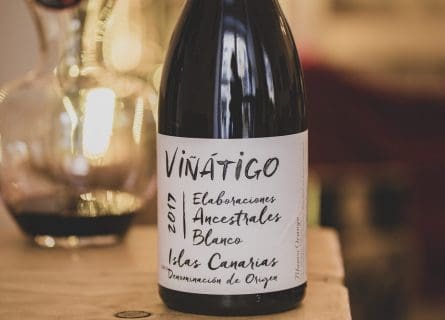
After decades of apathy – or simply unawareness – sommeliers are now raving about the Canary Islands. This is vital in gaining access to international markets: sommeliers are key influencers and gatekeepers to restaurant listings. Their endorsement can make or break an emerging style; hand-selling wines to consumers can often transform hesitancy into delight. But what, exactly, has seduced this firmament when the world is full of exceptional wine?
The islands’ rich diversity of indigenous varieties is part of the attraction. Many of the world’s most popular wines (and their imitations) are based on a small collection of grapes: Cabernet Sauvignon, Merlot, Chardonnay, Pinot Noir, and Sauvignon Blanc/Semillon blends. If you’re a Bordeaux or Burgundy aficionado, nothing else will suffice. However, others yearn for a point of difference – a break from the tedium of ubiquitous flavors and styles. It’s waiting for you off the coast of Morocco.
Take the two most popular varieties in the archipelago: Listán Blanco and Listán Negro. Widely grown across the Canary Islands, these ancient grapes deliver a singular expression of the soils and climate of each island, often characterized by minerals, garrigue, and softness of structure. Moreover, much of the acreage is planted to ungrafted bush vines, a benefit of cultivating vineyards in soils that phylloxera cannot tolerate. These old plants yield tiny berries packed with flavor and acid – raw materials transformed into savory and complex wines.
If modern tastes now lean towards moderate alcohol and elegance rather than power, the Canary Islands has plenty to satisfy. The pungent and smoky Baboso Negro electrifies the palate with its grippy tannins and sappy, crunchy fruit; Sumoll is a mineral delight, all floral fruit this and ripe acidity that. Dry Malvasia is on a roll, while Verdello and Albillo blends can rival the finest whites of Galicia in their concentration and structure. The best wines of the Canary Islands can titillate as much as any well-established Old World region. Yet, unlike some places we could mention, winegrowers have not abandoned their birthright in favor of international grapes to keep the accountants happy. If you seek the esoteric, you seek the wines of the Canary Islands.
Key Grape Varietals
-
Gual (Albillo)
Exploring Albillo: Spain's Versatile Wine Grape in Ribera del Duero, Madrid, and Galicia. Uncover the Diversity of this Remarkable Varietal.
Find out more -
Listán Blanco (Palomino)
Palomino: The quintessential grape for Sherry in Andalucia, Spain's southern delight. Unearth tradition's essence in every sip.
Find out more -
Marmajuelo (Bermejuela)
Marmajuelo is a rare and aromatic yellow-skinned grape variety grown exclusively on the Canary Islands, particularly in regions like Ycoden-Daute-Isora, Gran Canaria, and Tacoronte-Acentejo. It thrives in sandy island soils but is cultivated in limited quantities due to potential issues with fruit set. It is primarily used in blends because of its scarcity rather than its taste.
-
Malvasia
Malvasia Bianca, a historical grape from Greece, now thrives in Sicily and the Aeolian Islands, producing unique sweet wines.
Find out more -
Moscatel
The Moscatel grape, renowned for its aromatic allure and luscious sweetness, also plays a significant role in the world of Sherry. This versatile grape variety contributes to the creation of exceptional Sherries, adding depth, complexity, and a touch of honeyed richness to these fortified wines.
-
Pedro Ximenez
Indulge in the Sweetness of Pedro Ximénez: A Resplendent Grape for Andalusia's Montilla-Moriles. Experience the Richness of Sweet Sherries & Fortified Wines.
Find out more -
Baboso Negro (Alfrocheiro Preto)
The Baboso Negro grape, also known as Alfrocheiro Preto, is an exquisite red wine grape variety thriving in Portugal's Dão and Alentejo regions. It is notable for its deep color and captivating richness in wine blends. In Spain, it is considered a minor red grape variety cultivated in Zamora and Salamanca within Castile and León. Furthermore, it is recognized as an authorized grape variety in the prestigious La Gomera and El Hierro Denominación de Origen in the Canary Islands.
-
Listán Negro
The Listán Negro grape is an indigenous variety found in the Canary Islands. Its origins trace back to Spain's colonial past, and it has adapted to the unique volcanic terroir and coastal influences of the islands. Listán Negro produces diverse wines, ranging from light and fruity to robust and complex.
-
Negramoll
The Negramoll grape, predominantly grown in the volcanic soils and subtropical climate of the Canary Islands, is highly versatile and renowned for its vibrant wines. This dark-skinned variety produces easy-to-drink table wines with a deep cherry color and delightful aromas of red berries and caramel
-
Sumoll
Sumoll, a rustic black grape native to Catalonia's Penedès region, yields red, white, rosé wines, and Cava. Once widespread in Spain, it faced a decline since the 1980s. Now revived, it offers distinctive wines valued by local winemakers and is renowned for its unique flavor profile of red berries, herbs, and earthy tones. Also known as Vijariego Negro, it features in the Canary Islands and Pla de Bages DOPs.
Canary Island gastronomy
The islands’ food culture strongly emphasizes traditional recipes and tried-and-tested culinary techniques. It combines elements of Gaunche cooking (the original inhabitants) with imported ingredients like sweetcorn and chorizo. The warm and sunny climate year-round provides a wonderful bounty of fresh fruit and vegetables; Atlantic seafood, such as sama (a type of bass), is no less plentiful. Sama frita con mojo verde is a local favorite: fried bass served with a garlic, coriander, and vinegar sauce.
Further Reading: Discover More Related Blog Content
More information
If you would like us to customize an exclusive luxury tour, contact us and let us know your travel plans. We offer luxury food and wine tours for private groups of a minimum two guests. In addition, all of our private, chauffeured tours are available year-round upon request.



